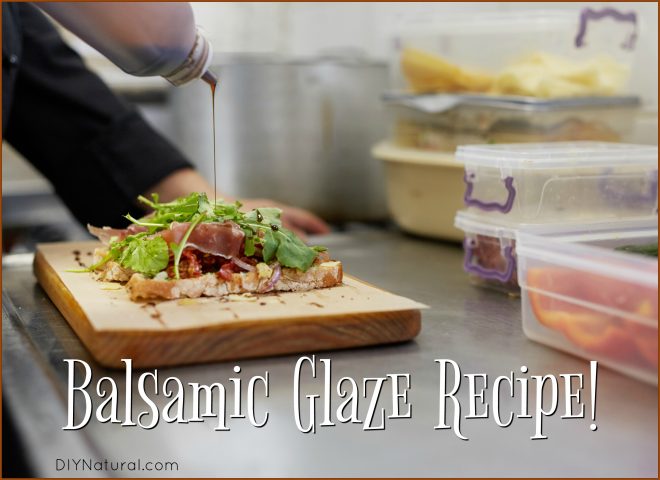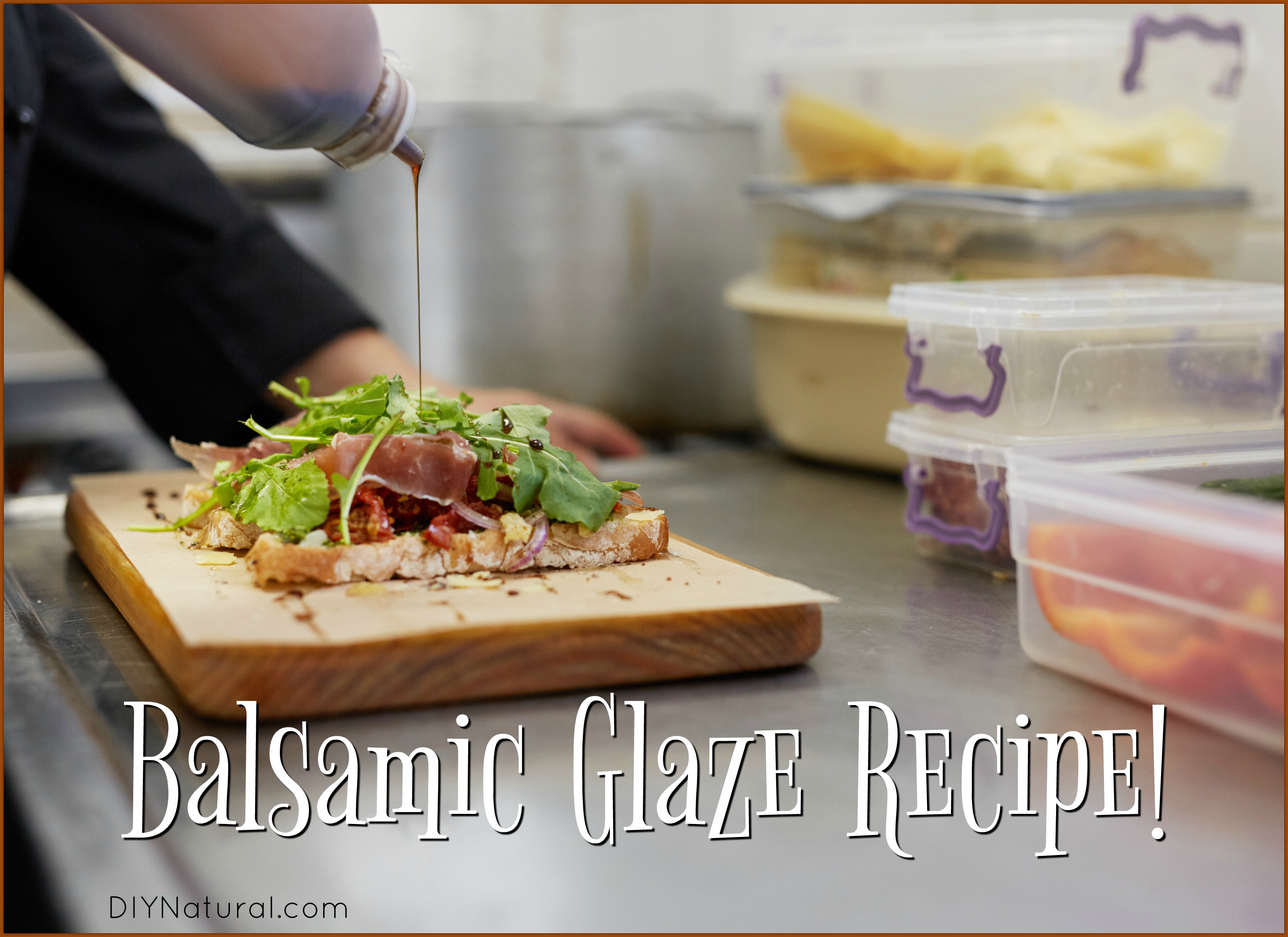
When tomatoes and basil are in season, I love making salad with a balsamic glaze. The rest of the year, it can be used on chicken, roasted vegetables, and even desserts! There’s nothing better than fresh figs, warmed and stuffed with goat cheese, drizzled with balsamic glaze.
I always purchased it in the past, but recently developed my own balsamic glaze recipe. Enjoy!
Making my Balsamic Glaze Recipe
It is important to find a good quality balsamic vinegar. There are so many on the market that it may be hard to choose. I love to purchase from a vendor at a local tailgate market who makes his own. He has so many great flavors like chocolate, raspberry, and even fig! Choose what appeals to you, because both plain or flavored will work for this balsamic glaze recipe.
Honey is the other main ingredient. I love to use local honey, but you can use just about any kind of honey. Substitute brown rice syrup or agave syrup for a vegan glaze. I’ve used molasses and I have heard that maple syrup is also a good choice. You could also try this with stevia, but since it’s not a syrup, it may not turn out the same.
Be sure to use a medium size stainless steel saucepan or ceramic coated pan. The vinegar could react to other metals like aluminum. It’s also best to use a stainless steel spoon to avoid reactions with the vinegar. (Plastic and wooden spoons will work, but could be stained from the balsamic vinegar.)
Balsamic Glaze Recipe
Ingredients
- 2 cups balsamic vinegar (find organic balsamic vinegar here)
- 2 Tablespoons honey (find organic honey here)
- optional, additions for added flavor (see “Variations” section below)
Process
Combine ingredients in a medium saucepan. Simmer on low for an hour, reducing by about half. Stir well to be sure the honey doesn’t settle to the bottom and scorch. Add optional additions from “Variations” section below.
After an hour, dip your spoon in and pull it out. The vinegar should be thick enough that it coats the spoon. If it doesn’t, simmer for another 15 minutes. Check for consistency again. (This process could take more time depending on how much moisture is in the vinegar to begin with and if you’ve added anything with more moisture, like fresh raspberries.)
Once it’s thick enough, you can use it warm, or pour it into a pint jar and refrigerate. If optional additions were used, strain glaze before storing.
Use any refrigerated portion within a few weeks.
Variations
You can use a flavored vinegar in this recipe to get a little added pizazz. You can also completely control the flavor by adding ingredients while your glaze is reducing. Here are some options:
- ½ cup fresh or frozen raspberries
- ½ cup fresh apricots, chopped
- ½ cup blueberries
- ¼ cup fresh rosemary, chopped
- ½ cup chopped strawberries
- 4-5 cinnamon sticks
Simmer any of the above in the vinegar. When it’s finished, strain it before storing.
Have you ever made a balsamic glaze recipe? If so, how did you use it?
*******




I’ve used Yacon syrup instead of honey – the balsamic has enough sugar already (carbs/high GI)